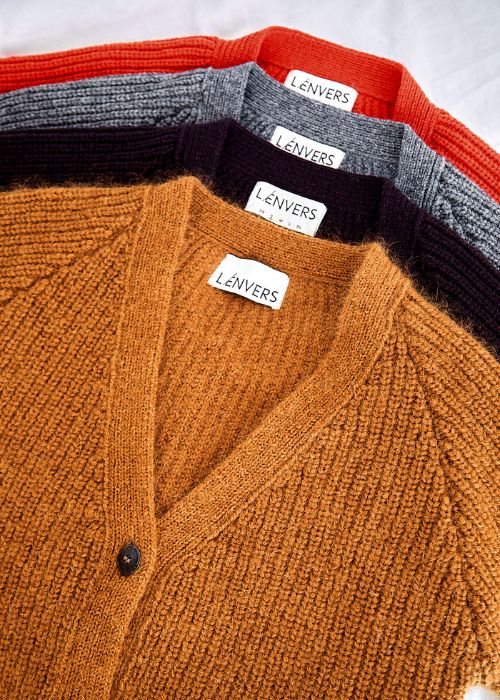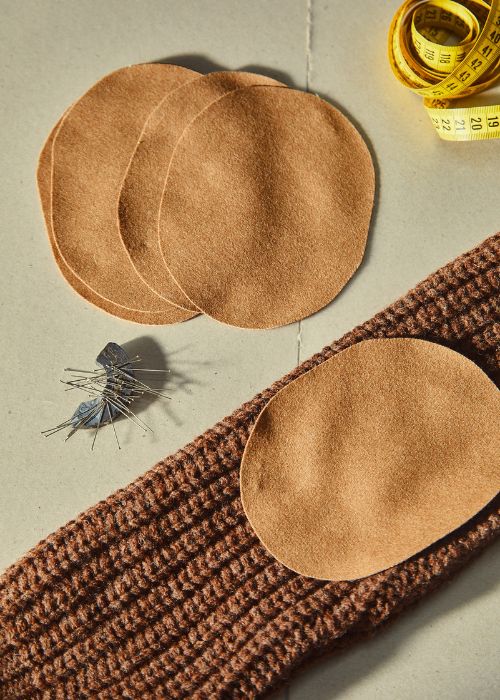WHAT ARE THE 4 R’S OF SUSTAINABLE FASHION?

The fashion industry is facing growing anxieties for its role in climate change, rising greenhouse gas emissions, and textile waste. Fast fashion—marked by overproduction, low-quality garments, and rapid consumption—has become one of the largest contributors to environmental degradation. According to the United Nations Environment Programme, the fashion sector emits more carbon than international aviation and shipping combined.
This is why the 4 R’s of sustainable fashion —Reduce, Reuse, Recycle, Repurpose— are more relevant than ever. They form the foundation of a new approach to dressing: one that respects resources, values craftsmanship, and supports a cleaner planet.
At L’Envers, we live by these principles. We use renewable fibers such as wool, yak, and GOTS-certified organic cotton to minimize our environmental impact and create garments designed to last for years. By weaving these “4 R’s” into daily life, each of us can make meaningful choices that reduce waste and promote responsible fashion.
REDUCE - Consuming Less, Choosing Better
The first step to sustainability is consumption awareness. “Reduce” means buying fewer but better-quality clothes that require less water, energy, and resources to produce.
- Buy Less, Choose Better: Inspired by designer Vivienne Westwood’s famous phrase, this principle highlights the importance of investing in timeless, well-made garments over fast fashion staples.
- Timeless Over Trendy: High-quality pieces with classic cuts remain stylish across multiple seasons, unlike trend-driven items quickly discarded.
- Mindful Shopping: Ask yourself: Do I really need this garment, or do I already own something similar? Thoughtful purchasing lowers demand for overproduction.
- Quality Materials: Choosing natural and biodegradable fibers like Merino wool, mohair, or organic cotton ensures durability and reduces textile waste in landfills.
Small lifestyle choices matter too—like carrying a reusable tote bag instead of plastic bags, or supporting slow fashion brands that emphasize durability and repairability.
REUSE - Extending the Life Cycle of Clothes
The second R, Reuse, encourages us to maximize the lifespan of garments. The more times a garment is worn, the lower its overall environmental footprint.
Ways to practice reuse:
- Smart Wardrobe Choices: Building a capsule wardrobe of versatile pieces reduces the urge to shop frequently.
- Creative Transformation: Refresh older items with simple DIY updates—changing buttons, over-dyeing, or resizing.
- Community Sharing: Clothing swaps with friends or local swap events extend garment lifespans while fostering community.
- Donation: Gently used garments can be given to thrift shops or charities, extending their usefulness and benefiting those in need.
- Repair and Care: Mend small holes, sew on patches, and follow proper washing techniques. (Wool, for example, requires less washing, making it an eco-friendly option over synthetics.)
Reusing isn’t just about sustainability—it’s about developing a deeper connection to your wardrobe, treating clothing as something valuable rather than disposable.
RECYCLE - Closing the Loop
Recycling is the process of transforming textiles into new fibers or materials, reducing reliance on virgin resources. While still limited in scale, textile recycling is growing, supported by organizations, which promotes a circular economy in fashion.
Benefits of recycling:
- Resource Conservation: Recycling one ton of textiles can save thousands of liters of water and reduce landfill waste.
- Eco-Friendly Fabrics: Support brands that prioritize renewable fibers and transparent production processes.
- Consumer Participation: Many cities now offer textile recycling bins. Donating unused garments to second-hand stores also prevents clothes from ending up in landfills.
Every small action contributes to systemic change—when we recycle responsibly, we reduce pressure on ecosystems and support the shift toward circular fashion.
REPURPOSE - BRINGING NEW LIFE INTO OLD CLOTHES

The last R, Repurpose, is about creativity. It means finding innovative ways to transform existing garments into new, functional items.
Practical examples:
- DIY Projects: Turn an old sweater into mittens, a scarf, or a cushion cover.
- Altering Garments: Shorten a dress into a blouse, or remove sleeves from a shirt to create a vest.
- Fabric Scraps: Use leftover fabrics for scrunchies, rags, or patchwork. At L’Envers, we repurpose fabric offcuts into scrunchies and elbow patches, ensuring nothing goes to waste.
Repurposing reduces demand for virgin materials, lowers textile waste in landfills, and nurtures creativity. It is a reminder that sustainability is not only responsible but also deeply inspiring.
Conclusion
The 4 R’s of sustainable fashion—Reduce, Reuse, Recycle, Repurpose— serve as a blueprint for transitioning from a wasteful fast fashion model to a thoughtful, circular one. By embracing these principles, we can each lower our carbon footprint, reduce textile waste, and contribute to a fashion industry that values people, planet, and longevity.
At L’Envers, we believe that every small decision matters: repairing a sweater instead of throwing it away, choosing natural fibers over synthetics, or sharing clothes with a friend. Together, these actions create ripple effects that lead to systemic change.
Sustainable fashion is not about perfection—it’s about progress. And the 4 R’s remind us that by making conscious choices every day, we help build a cleaner, greener future for the generations ahead.
FAQ
4R's mean: Reduce, Reuse, Recycle, and Repair
You can apply the 4 R’s by investing in sustainable knitwear, repairing cardigans instead of discarding them, and recycling old clothing responsibly.
Ethical fashion brands like L’Envers apply the 4 R’s by offering knit-to-order clothing, using natural fibers, and designing garments made to last.
FREE SHIPPING
from 300€ to Europe, from 320€ to North America, UK, Swiss, from 360€ to Asia
FLEXIBLE EXCHANGE AND RETURNS
within 30 days
3-PART PAYMENTS
with SplitIt
CUSTOMER SERVICE
Contact Us for advice and customization


